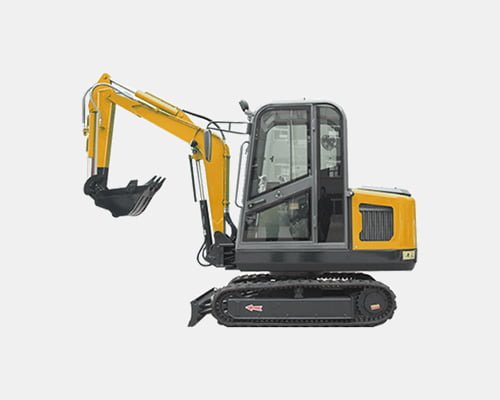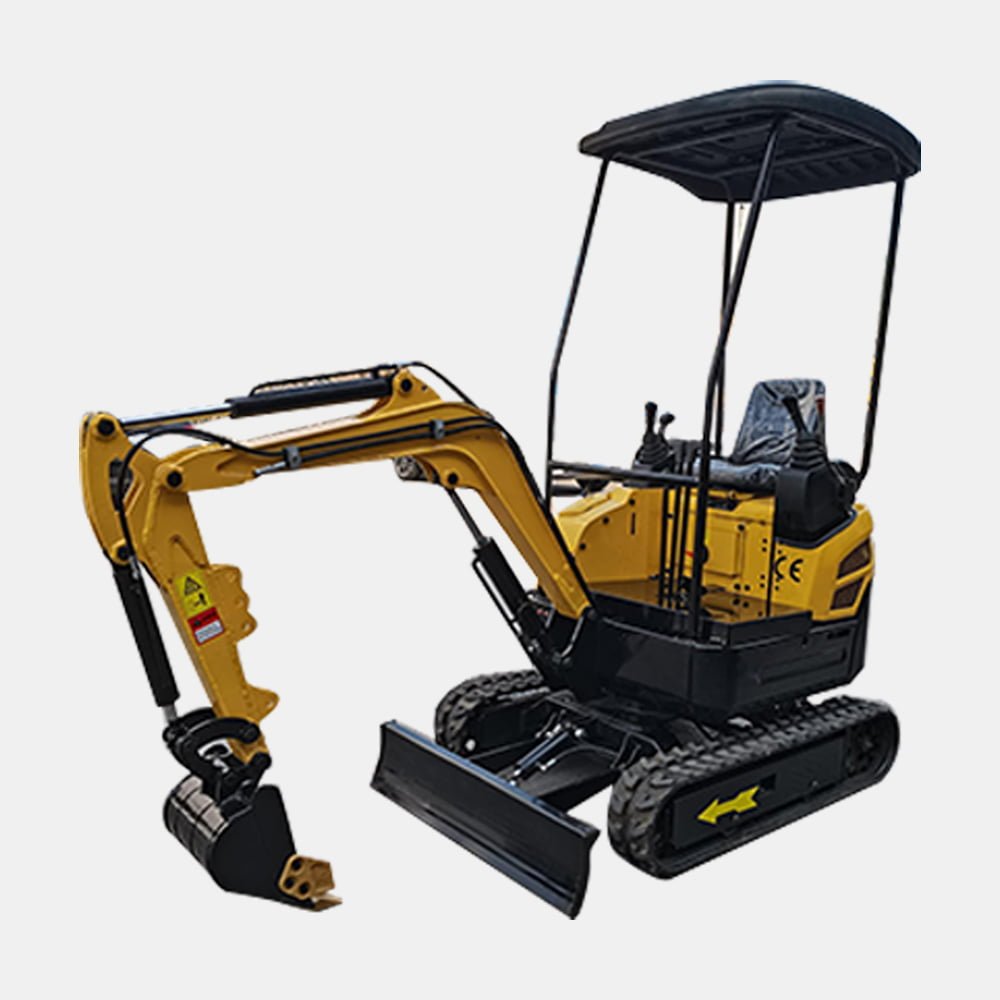Introduction to excavators and their uses
5 Things You Most Likely Didn’t Know About Sizes Of Excavators.Welcome to the world of excavators, where massive machines dig deep into the earth with precision and power! These mighty giants are essential in construction projects, helping to shape landscapes, lay foundations, and unearth hidden treasures. But did you know that excavators come in various sizes? Yes, indeed! From compact mini-excavators to colossal hydraulic monsters, each size offers its own set of advantages and capabilities.
In this blog post, we will explore 5 things you most likely didn’t know about the sizes of excavators. Whether you’re a seasoned professional or just starting out in the world of construction, understanding these differences can make all the difference when it comes to selecting the right machine for your project. So let’s dive deep into this fascinating realm and uncover some exciting insights together! Get ready to be amazed by what lies beneath those towering excavation marvels!

The different sizes of excavators and their corresponding capacities
5 Things You Most Likely Didn’t Know About Sizes Of Excavators.5 Things You Most Likely Didn’t Know About Sizes Of Excavators.Excavators come in various sizes, each designed to meet specific project requirements. From compact mini excavators to large hydraulic models, the size of an excavator determines its capacity and capabilities on the job site.
Mini excavators are perfect for small-scale projects or tight spaces where maneuverability is key. These machines typically have a weight range of 1 to 6 tons and offer digging depths ranging from 5 to 12 feet. Despite their smaller size, mini excavators can still handle tasks like trenching, landscaping, and utility work with ease.
For medium-sized projects that require more power and reach, mid-range excavators are the way to go. With weights between 7 and 20 tons, these machines can dig deeper holes (up to around 15-18 feet) and handle heavier loads. Mid-size excavators are commonly used in construction sites for digging foundations or trenches.
Large hydraulic excavators are heavyweights of the excavation world. Weighing over 20 tons, these giants excel at handling massive earth-moving tasks such as mining operations or major infrastructure projects. They have impressive digging depths that can reach up to a staggering depth of over 30 feet!
When choosing the right size of an excavator for your project, several factors need consideration including available space on-site, required digging depth/reach/height/capacity/load limits/excavation area/digging width/etc., soil conditions/strength/firmness/thickness/water table level/rockiness/hardness etc., access limitations/narrow passages/gates/doorways/tunnels/etc., lifting requirements/crane accessibility/materials handling needs/etc., required speed/productivity/ease-of-use/maneuverability/mobility/etc., cost/budget considerations/fuel consumption/maintenance costs/operator wages/equipment rental fees/depreciation rates/life cycle costs/etc.

Factors to consider when choosing the right size excavator for a project
When embarking on a construction or excavation project, choosing the right size excavator is crucial for its success. There are several factors to consider before making this important decision.
You need to assess the scale of your project. Is it a small residential job or a large-scale commercial undertaking? The size of your project will determine the capacity and capabilities required from an excavator.5 Things You Most Likely Didn’t Know About Sizes Of Excavators.
Next, consider the space available at your worksite. If you’re working in tight or confined areas, a smaller excavator would be more suitable as it offers greater maneuverability.
Furthermore, think about the type of work that needs to be done. Are you digging trenches or demolishing structures? Different sizes of excavators come with varying attachments and functionalities that cater to specific tasks.
The soil conditions also play a significant role in determining the appropriate size of an excavator. Harder soils may require larger machines with more power, while softer soils can be handled by smaller models.
Always keep budget considerations in mind when selecting an excavator size. Larger machines often come with higher rental costs and maintenance expenses.
By carefully considering these factors – project scale, worksite constraints, task requirements, soil conditions, and budget – you’ll ensure that you choose the perfect-sized excavator for your specific needs.

Advantages and disadvantages of each excavator size
When it comes to choosing the right size excavator for a project, there are several factors to consider. Each size has its own advantages and disadvantages that can greatly impact the outcome of your project.
Starting with smaller excavators, one major advantage is their maneuverability. These compact machines are able to navigate tight spaces with ease, making them ideal for urban projects or jobs where space is limited. They also tend to be more fuel-efficient and have lower operating costs compared to larger models.
However, smaller excavators may not have the same digging power as their larger counterparts. This could be a disadvantage if you’re working on a project that requires heavy-duty excavation or dealing with large amounts of soil or debris.
On the other end of the spectrum, larger excavators offer impressive digging capabilities. Their increased reach and bucket capacity make them suitable for large-scale construction projects such as road building or mining operations. Additionally, they often come equipped with advanced features like GPS technology, enhancing precision and efficiency.
Despite these benefits, bigger isn’t always better. Larger excavators typically require more space to operate and transport, which could pose challenges in tight job sites or when navigating narrow roads. They also tend to consume more fuel and have higher maintenance costs.
Choosing the right size excavator depends on your specific project requirements and constraints. It’s crucial to assess factors such as available space, budget limitations, and desired productivity levels before making a decision.

Real-life examples of projects that require specific excavator sizes
1. Residential Construction: When it comes to building a new home or renovating an existing one, different sizes of excavators are needed for various tasks. A compact excavator with a smaller bucket size is ideal for digging trenches and foundations in tight spaces. On the other hand, larger excavators with greater reach and capacity are used for tasks like clearing land or moving heavy materials.
2. Road Construction: Excavators play a crucial role in road construction projects. For example, when widening roads or constructing highways, medium-sized excavators are often deployed to dig trenches for utilities such as water pipes and electrical cables. These machines offer the perfect balance between mobility and power.
3. Mining Operations: In large-scale mining operations, massive hydraulic shovels are utilized due to their incredible digging capabilities and loading capacities. These behemoths can move vast amounts of earth and rock efficiently, making them essential tools in extracting valuable minerals from the ground.
4. Demolition Projects: Excavators equipped with specialized attachments like demolition shears or breakers are indispensable in tearing down structures safely and efficiently. The size of the machine depends on the scale of the project – smaller ones may be suitable for residential demolitions while larger ones are required for taking down commercial buildings.
5.Environmental Remediation: Excavators also find applications in environmental remediation projects such as cleaning up polluted sites or removing hazardous materials from industrial areas. Depending on the specific task at hand, either compact or mid-sized models may be chosen based on accessibility requirements.
These real-life examples highlight just how important it is to select the right size excavator for each unique project’s demands.

Innovative developments in the excavation industry regarding sizes
Innovative developments in the excavation industry regarding sizes have brought about significant advancements and improvements. One such development is the introduction of compact excavators. These smaller-sized excavators offer increased maneuverability and versatility, making them ideal for projects in tight spaces or urban environments.
Another exciting development is the advent of mini excavators. These pint-sized powerhouses pack a punch despite their small size, allowing operators to tackle a wide range of tasks with ease. Mini excavators are particularly useful for landscaping projects or small-scale construction work.
On the other end of the spectrum, we have seen an increase in demand for larger-sized excavators known as heavy-duty machines. These mammoth machines boast exceptional digging capabilities and can handle massive amounts of material efficiently. Heavy-duty excavators are commonly used in large-scale construction projects like road building or mining operations.
Additionally, advancements in technology have revolutionized excavation equipment across all sizes. GPS systems now allow operators to precisely track their movements and accurately measure depths and distances while operating an excavator. This not only improves efficiency but also reduces errors on-site.
The integration of telematics has also provided valuable data insights into machine usage, fuel consumption, maintenance needs, and more. This information helps fleet managers make informed decisions regarding equipment utilization and maintenance schedules.
Excavator manufacturers have also made strides towards reducing emissions by introducing hybrid models that combine traditional diesel engines with electric power sources. These eco-friendly alternatives help reduce carbon footprints without compromising performance.
Innovative developments in excavation equipment sizes continue to shape the industry’s landscape by offering increased efficiency, improved precision through technology integration, reduced environmental impact with hybrid models, and enhanced flexibility through compact designs or heavy-duty capabilities.
Conclusion: why knowing about excavator sizes is important for successful projects
Knowing about excavator sizes is crucial for the success of any construction or excavation project. The size of an excavator directly impacts its capabilities and efficiency, making it essential to choose the right size for each specific task.
Understanding the different sizes of excavators allows you to select the most suitable one for your project. By considering factors such as the depth and width of the digging area, as well as any access limitations on site, you can ensure that you have an excavator with adequate reach and maneuverability.
Choosing the correct size helps optimize productivity. Using a smaller-sized excavator for a large-scale project may result in slower progress and increased labor costs. On the other hand, selecting an oversized machine can lead to unnecessary expenses and potential damage if it exceeds site requirements.
Additionally, being knowledgeable about excavation equipment sizes enables better cost management. Each size has unique fuel consumption rates and maintenance needs that impact overall project expenses. By accurately assessing your needs beforehand, you can allocate resources more effectively without compromising quality or safety.
Moreover, understanding different excavator sizes allows you to plan projects more efficiently by estimating timelines accurately. With this knowledge in hand, you can create realistic schedules based on how quickly work can be completed using a particular machine size.
Lastly but equally important are safety considerations. Selecting an appropriate-sized excavator ensures safe operation on-site while minimizing risks associated with overloading or instability caused by inadequate weight distribution.
In conclusion , familiarizing yourself with various excavation equipment sizes empowers you to make informed decisions during planning stages which ultimately contributes to successful projects. From optimizing productivity and managing costs effectively to ensuring safety at all times – knowing about excavator sizes is paramount in achieving positive outcomes in construction endeavors.

